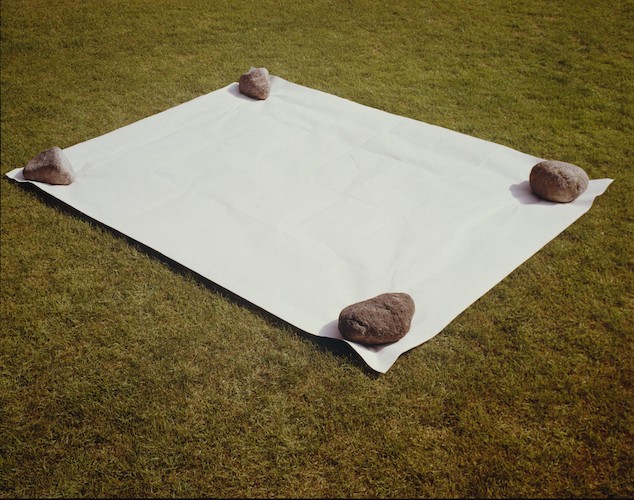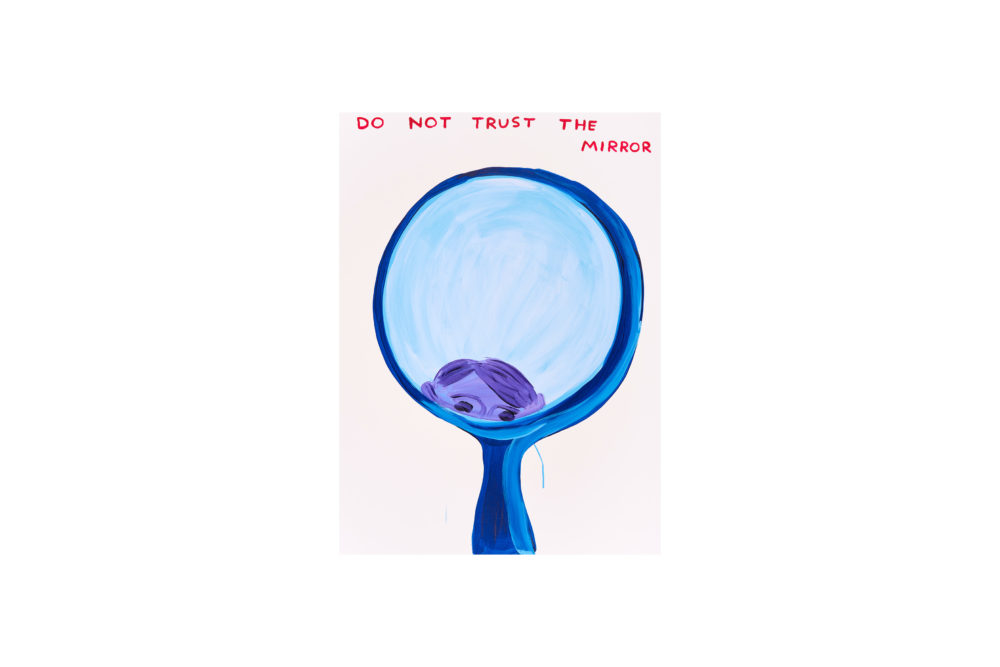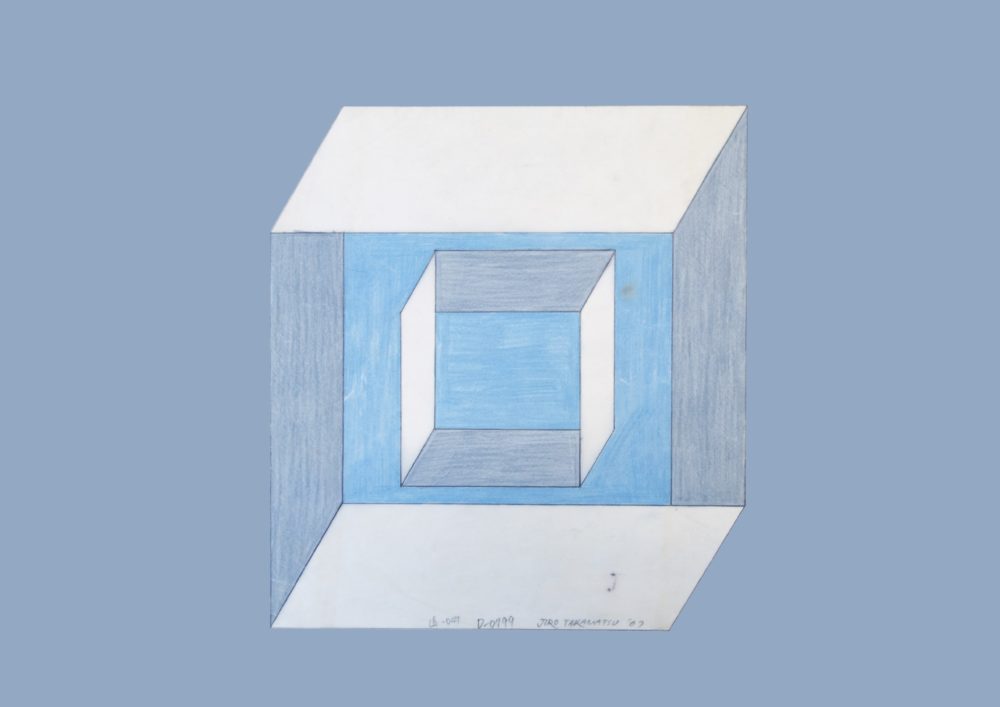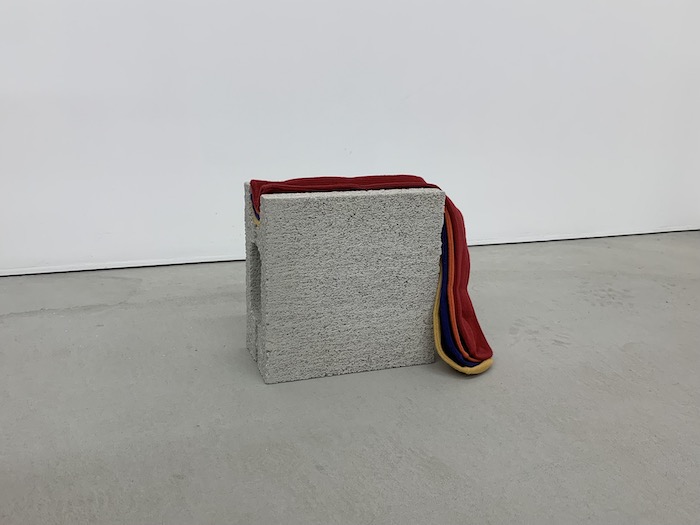Exhibitions
小平篤乃生
Atsunobu Kohira “Carbon Variation N°1 – Atsunobu Kohira”

石炭という素材をめぐって小平は数年来の逍遥を続けている。出会いは走査顕微鏡で見た景色だった。レンズの向こう、超クローズアップの石炭の地肌は美しきグレースケールの世界で、まるで未知の惑星のごとき壮大な眺めだったという。そこから始まった旅を「石炭の巡礼」と小平は名付けたが、あらかじめ定められた目的地はなく、決まった道筋もない。 数億年前を生きた巨大なシダ植物たちが地中深く埋もれ、地熱でじりじりと熱せられ、計り知れない圧力をかけられて錬成される過程を想えば、石炭という物質は彫刻的に生み出されると言えるかもしれない。温度を加え、ゆっくりとこねられ、冷えてできた彫刻。それは、人類が現れるより遥か昔、地球上に繁茂した生き物の証左であり、生成されるまでの永い永い年月を無言のうちに内包する塊/ヴォリュームである。
地域的な偏りが比較的少なく、埋蔵量の多い化石燃料である石炭は、人類にとって身近なエネルギー資源だ。それは燃やされて電気エネルギーとなり、暮らしの中に偏在している。今回、小平が展示室で想起させるのはそうしたエネルギーへと変換された石炭だが、エネルギー というよりもむしろ生命の源泉であるところの「精気」というべきかもしれない。地球が生み出した漆黒の彫刻、石炭に宿る精気。エネルギーはその精気の発現である。石炭を用いて特別に創られたインクが、ウォール・ドローイングのメディウムとなり空間を満たす。ドローイングの基点となる壁面の電源から採られたエネルギーは、部屋を薄暗く照らす明かり(その暗さは洞窟を思わせるという)となり、スピ ーカーを通って間欠的なノイズを響かせる。こうした小平の手つきには、石炭の精気の「可視化」ではなく、「空間化」または「ヴォリューム化」という言葉がふさわしい。かねてより音は小平にとって重要なモチーフのひとつであるが、この非物質的な存在に対しても、彼はそれが空間を満たすという点において量塊/ヴォリュームをもつと考える。音量を大きくすることをヴォリュームを上げると言うが、小平の 実際に空間を占める音の体積が増えるような、あたかも彫刻的イメージを持っている(もちろん実際にはそれが振動現象であることは了解の上で)。空間全体を満たすドローイングが音を伴って光のなかに立体的に立ち現れるとき、黒いダイヤとも言われる石炭の精気が、それが生み出された長い年月を超えてヴォリューム化される。 興味の赴くまま、偶然の出会いに導かれて「石炭の巡礼」は続く。本展はその旅の一章であり、ボキャブラリーにこだわるなら「一巻(a volume)」 であるとも言えるのだろう。
橋本 梓(国立国際美術館 主任研究員)
■作家コメント
絶え間なく溢れる力が光と音を作り出す。
そのエネルギーはどこから来るのだろうか。
どこへゆくのだろうか。
石炭の墨と糸。
手が植物の化石に染まり
エネルギーの影が残る。
エネルギーについて考え始めたのは6年前。最近は、石炭をテーマに作品を作っている。掘り下げればどこまでも続いてい る。でもまだ見えない光に続いているような気がする。そこには古代の精霊がいる。
僕はこの精霊との遭遇を求め続けている。精霊が放つエネルギーの糸を伝って、石炭の巡礼をしている。
小平篤乃生
-----
Kohira has been on the path of cultivating his thoughts on and working with the material of coal for years. His encounter with it was in a landscape that he saw using a scanning microscopy. Through the lens, the texture of the coal in super close-up presented a beautiful gray-scale world, which was a magnificent view resembling that of an unknown planet. Kohira named his journey which started then as ‘pilgrimage of coal’; it had no fixed destinations or predetermined routes.
When we think of its creation process that required the huge pteridophytes from a several hundred million years ago to be buried underground to be heated by terrestrial heat and given a massive pressure, coal might be said to have been produced sculpturally. The sculpture made with added temperature, slow kneading, and subsequent cooling down. It is the evidence for the existence of life that exuberated on earth far before the birth of human beings and mass/volume that silently encapsulates the long period of time which passed before its generation.
Having relatively small regional differences in the amount of the reserves, and being abundant globally, coal is a familiar energy source for humans. Its combustion generates electricity that is ubiquitous in our daily life. Kohira’s work in this exhibition evokes such kind of energy converted from coal, although it might be better to call it ‘spirit,’ the source of life, instead of ‘energy.’ It is the spirit which exists in jet black sculptures that earth has created. The energy is the expression of such spirit. The ink specially made from coal is used for the wall drawing that fills the space. The energy taken from the electrical outlet on the wall where the drawing starts generates the light that dimly illuminates the room. (The room’s darkness has been related to a cave interior.) The energy is then used to create intermittent noises coming out of a speaker. Instead of the word ‘visualization,’ spatialization’ or ‘voluminization’ better suit to describe such procedures by the artist. Sound has been one of the important motifs in Kohira’s art, but he considers this nonmaterial existence to also have mass/volume on the grounds that it fills a space. We say “to increase volume” when we mean to make a sound louder. Kohira’s work has a sculptural quality in that it actually gives an impression of the expansion of the size of a sound, although he is aware of the fact that sound is in reality an oscillatory phenomenon. When a drawing that fills a space is presented three-dimensionally under the light, the spirit of the material of coal, whose another name is black diamond, becomes a volume surpassing the massive amount of time that the coal took to be formulated.
Navigated by his interest and led by accidental encounters, Kohira’s ‘pilgrimage of coal’ continues. This exhibition is a chapter in its journey, and if I should be particular about my wording, I may as well call it ‘a volume’ in it.
Azusa Hashimoto (Curator at The National Museum of Art, Osaka)
■Artist Statement
A ceaselessly overflowing energy creates light and sounds.
Where does the energy come from?
Where does it go to?
The ink and string made from coal.
My hands are dyed with the fossils of plants, and a shadow of energy remains.
It was six years ago that I started thinking about energy. Recently, I am making works on the subject of coal. When I delve into the theme of energy, I see the domain of an unknown darkness continuing endlessly. However, I feel that this darkness may lead up to a light that I have yet to see, in which ancient spirits exist.
I am perpetually seeking to encounter such ancient spirits. I follow the string of energy from the spirits to continue my pilgrimage of coal.
Atsunobu Kohira






Past Exhibitions






